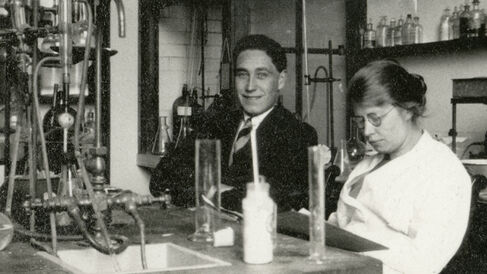Low Temperature Research Station

By 1922 there were 47 research workers in Hopkins' group and in that year the Low Temperature Research Station (LTRS) opened with William Hardy (Director of Food Investigation at the Department of Scientific and Industrial Research) as its Superintendent. This came about because of a recommendation by the Food Investigation Board to set up a 'cold storage laboratory' and, given a research environment that owed much to Hopkins, Cambridge was the obvious place for it. One of the early research topics was post-mortem changes in meat that had been initiated by Hopkins and Walter Morley Fletcher in their study of the formation of lactic acid in muscle published in 1907.
A later LTRS Director, Dr Edgar Charles Bate-Smith, recalls the Downing Site when it was built: "A continuous avenue of lime trees stretched from the School of Agriculture [now the Department of Genetics] to the spacious court of Downing College. Where the Geography Department now stands was a small School of Forestry; otherwise the only other buildings were the Molteno Institute of Parasitology [now the Molteno Building, part of the Department of Pathology] and some huts and styes belonging to the School of Agriculture."
In the 1940s Kenneth Bailey, working in the LTRS, revealed the critical role of calcium in muscle contraction, and it was in the same building that Max Perutz experimented on the properties of ice as part of the abortive Habakkuk Project to make icebergs that could be floated into strategic locations as aircraft landing strips.
In 1967 the Institute of Food Research was set up in Norwich and the Meat Research Institute established at Long Ashton, with LTRS staff as their nuclei. The LTRS, often referred to as 'the Hardy Building', then became, in effect, an extension of the main biochemistry building (i.e. the Hopkins Building) where it housed a substantial proportion of the Department for the next 30 years until, in 1997, they were persuaded to leave their salubrious surroundings for the new Sanger Building. The LTRS is now known as the Sir William Hardy Building and forms part of the Department of Geography.
In the year after the LTRS was opened, 1923, Malcolm Dixon was appointed a Senior Demonstrator in Biochemistry.
